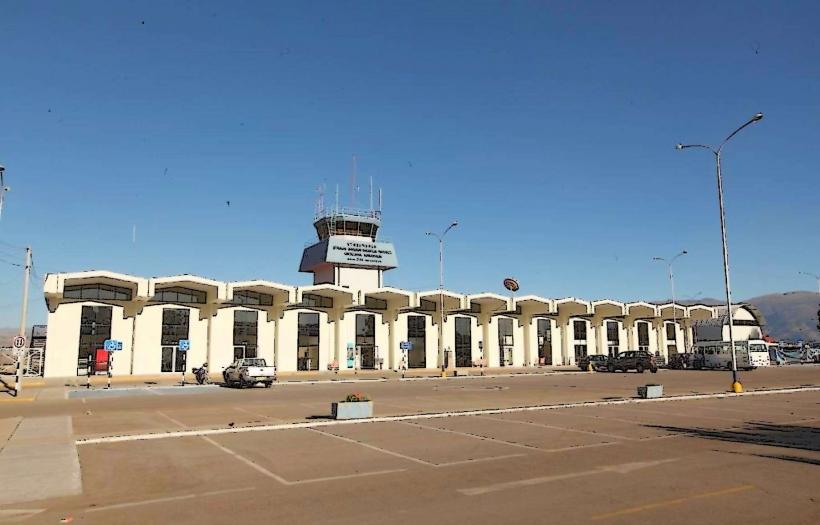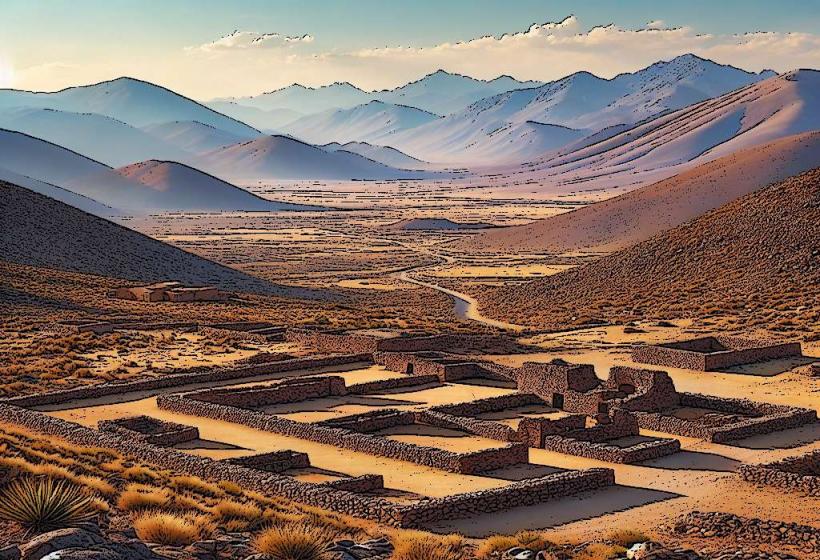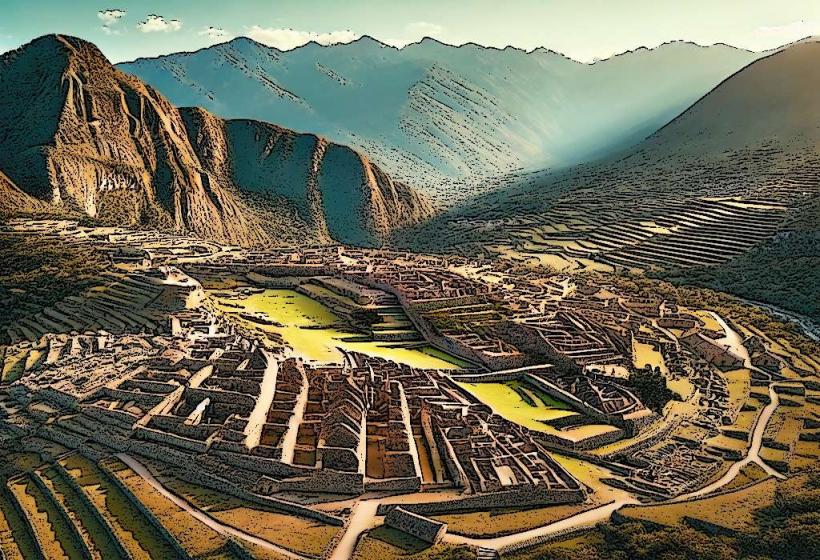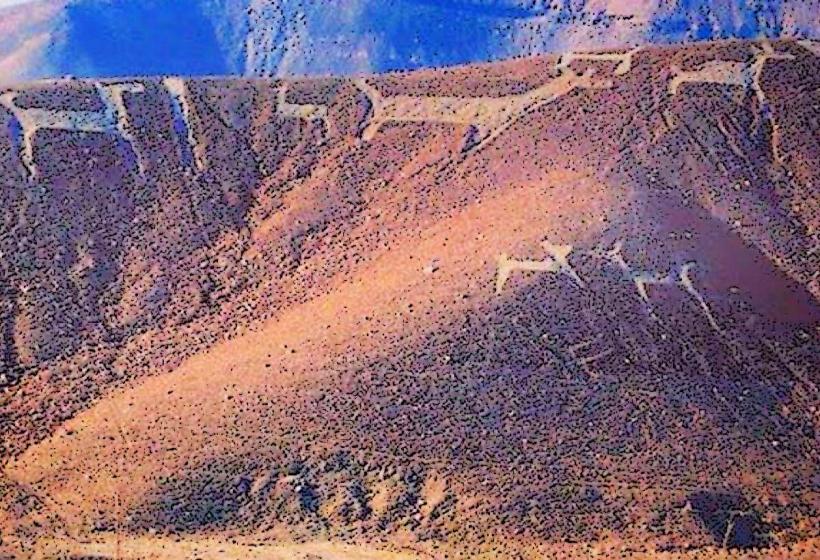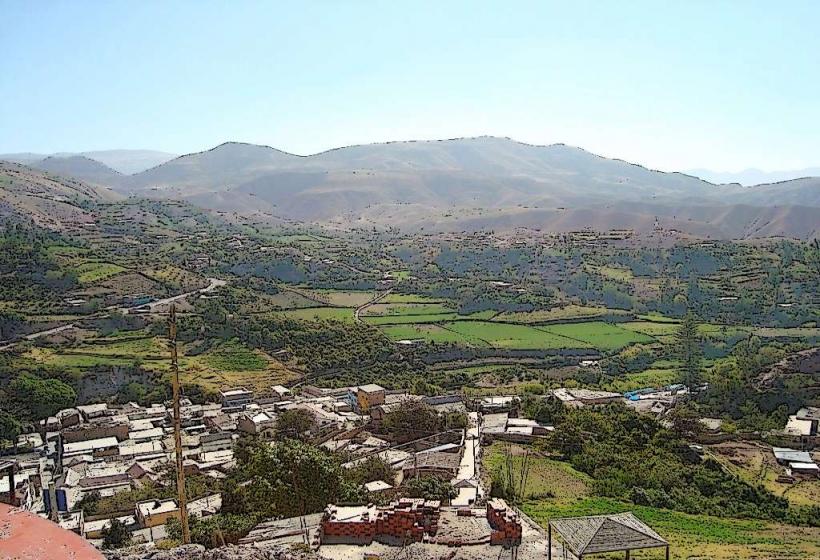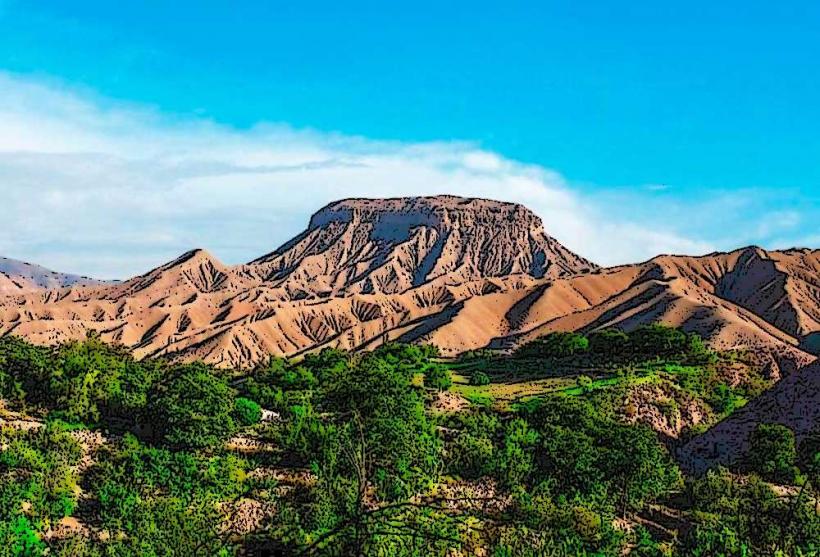Information
Landmark: Torata ChurchCity: Moquegua
Country: Peru
Continent: South America
The Torata Church (Iglesia de Torata) is an iconic colonial-era church located in the small town of Torata, in the Moquegua Region of southern Peru. The church is renowned for its historical and architectural significance, offering a glimpse into the colonial period and the deep cultural roots of the region.
Historical Context
Colonial Era:
- The Torata Church was built during the Spanish colonial period in the 17th century, around the 1600s. The Spanish colonialists introduced Catholicism to the region, leading to the construction of many churches as part of their religious and cultural mission.
- The church's establishment is connected to the region's agricultural growth, as Torata became a significant settlement, particularly for the cultivation of crops such as grapes, olives, and wheat.
Location and Role:
- The church was built in the town of Torata, which is located at the foot of the Andean mountains, a few kilometers from Moquegua city. The church played an important role in serving the local indigenous and mestizo populations during the colonial period.
- As a center of both religious practice and community life, the church helped shape the spiritual and social life of the local people.
Architectural Features
Baroque Style:
- The Torata Church is built in a baroque style, which was common in colonial-era Peru. This architectural style is known for its ornate decorations, dramatic use of space, and intricate carvings.
- The church features stone walls and a wooden bell tower, which stands out in the surrounding landscape. The bell tower, with its simple yet elegant design, is a key feature of the church and serves as a landmark for the town.
Interior Design:
- Inside, the church is characterized by a neoclassical altar that showcases detailed woodwork and a gold-leaf finish. The altar is dedicated to Saint Peter, the patron saint of Torata, and is decorated with intricate sculptures of saints, angels, and biblical scenes.
- The church also contains a collection of colonial-era religious paintings and icons, including images of Catholic saints and the Virgin Mary. These works reflect the fusion of European Catholicism with local artistic traditions.
Wooden Ceiling and Vaults:
- The wooden ceiling of the church is one of its most distinctive features, with vaulted arches made from local timber. The ceiling's design is an excellent example of the craftsmanship of colonial-era builders in the region, and it has been preserved in its original form.
Cultural Significance
Religious Importance:
- As a colonial church, Torata Church played a key role in the evangelization and religious practices of the local population during the colonial era. It was central to Christian rituals, including Masses, baptisms, weddings, and funerals.
- The church continues to serve as a place of worship for the local community and hosts religious celebrations, particularly during the Feast of Saint Peter, which honors the patron saint of the town.
Symbol of Colonial Heritage:
- The church stands as a symbol of Peru’s colonial past, representing the mixture of Spanish Catholicism and indigenous traditions. It is an important part of the cultural heritage of the Moquegua region, offering visitors a connection to the historical and religious identity of the area.
Preservation:
- The church is an important part of the region’s historical and cultural preservation efforts. While it has undergone some renovations to maintain its structural integrity, much of the original architectural detail and artwork have been preserved, making it an attractive site for tourists and historians alike.
Visiting Torata Church
Location:
- The Torata Church is located in the small town of Torata, which is about 30 kilometers (19 miles) from the city of Moquegua, making it easily accessible by car or taxi. The town is situated at an elevation of around 2,400 meters (7,874 feet), in a scenic valley surrounded by hills.
Architectural Tours:
- Visitors to the church can enjoy a guided tour to learn about its history, architecture, and significance. Local guides often provide insights into the colonial-era construction techniques, the symbolism behind the church’s artwork, and the role of Catholicism in the region.
Religious Services:
- The church continues to hold regular Catholic services, and visitors are welcome to attend Mass. Special religious celebrations and processions take place throughout the year, especially during the Fiesta de San Pedro (Feast of Saint Peter) in June, which is a highlight for locals and visitors alike.
Best Time to Visit:
- The best time to visit Torata is during the dry season, from May to September, when the weather is pleasant, and the roads are in good condition for travel. The region also offers stunning views of the Andean mountains and valleys, which makes it a great place for photography.
Why Visit Torata Church?
Historical Insight:
- Visiting Torata Church offers a deeper understanding of the colonial period in Peru. The church stands as a testament to the historical religious influence of the Spanish colonization and the fusion of European and indigenous cultural traditions.
Architectural Beauty:
- The baroque and neoclassical architecture of the church, with its intricate woodwork, gold-leaf decorations, and artwork, is a unique aspect of the region’s colonial legacy and an architectural gem worth exploring.
Cultural Significance:
- As a living monument to the faith and culture of the local people, Torata Church remains an active center of worship and a symbol of the community’s enduring Catholic traditions.
Serene Location:
- Torata is a peaceful town with beautiful natural surroundings. Visitors can enjoy the scenic landscapes of the Andes mountains, making a trip to the church a relaxing and reflective experience.
Conclusion
The Torata Church is a remarkable historical and architectural site that offers visitors a glimpse into the colonial past of Peru. Its beautiful baroque architecture, religious significance, and cultural legacy make it a must-see destination for those interested in the region’s history and heritage. Whether you are a history enthusiast, a lover of colonial architecture, or simply looking to experience the serenity of this Andean town, the Torata Church is a meaningful and enriching place to visit.

